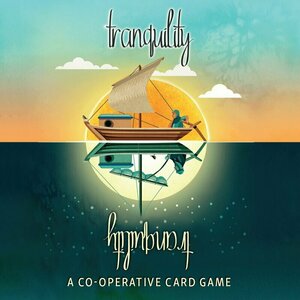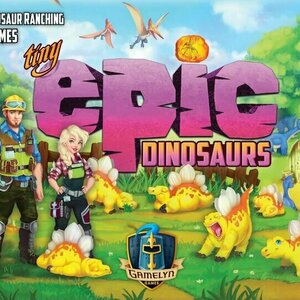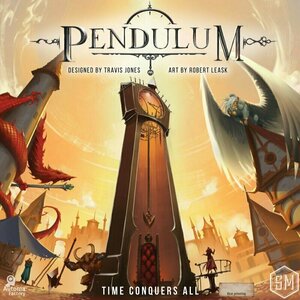
Best Electronic Drums
Music and Entertainment
App
We have prepared a special the Best Electronic Drums (percussion) set for you! Try unique music...

Jaime by Brittany Howard
Album
Debut solo studio album by the lead guitarist/vocalist of chart-topping, GRAMMY-winning band,...
Purple Phoenix Games (2266 KP) rated Samurai Spirit in Tabletop Games
Jun 12, 2019
As a Samurai, you spend your life traveling across the land to help those in need. Most recently, you and a handful of other Samurai have been contracted by a small village to defend them against a clan of invading raiders. Only by working together, and by using your extensive training, will you succeed in keeping this village safe!
Samurai Spirit is a cooperative game of press-your-luck. Players take on the role of a Samurai, each with a unique power, and take turns drawing cards and fighting off the invaders or offering support to your fellow Samurai. Invaders can have recurring negative effects, so strategize wisely on how best to combat them and see how far you can push your luck each round. If you are able to survive through 3 rounds (waves) of invaders with at least one surviving farmstead and family, the Samurai are victorious and the village is saved! If any of the Samurai are killed, or the village has been completely destroyed by invaders, then the game is lost. As a solo game, Samurai Spirit plays essentially the same as in group play, with only 2 main differences – the solo player controls 2 Samurai instead of 1, and the support tokens from the unused Samurai are each available for use once during the game.
For such a neat theme, this game falls short for me. It seems simple enough, but there are areas of ambiguity in the rules that lead to some confusion. For starters, the text size is so small that I am not able to find any information at a quick glance! The text itself is not always clear either – like when, at the end of a round, the rules say to collect all cards used this round, does that include cards that have been discarded due to Samurai abilities? How about the cards of the Intruder stack that are presumably discarded after being revealed? The rulebook offers no clarification, and I honestly still don’t know the right answer.
The order/layout of the rules feels mismatched too – relevant information is not always grouped together, and I find myself flipping between several pages at a time trying to figure out one single thing. For example, in the ‘Fight’ action description, it says that if you reach your Kiai value exactly, you can activate your Kiai ability. You have to turn the page to a different section to see exactly what activating that ability means, and then you have to flip an additional 2 more pages to see what each individual Kiai ability is! Why not just put them all in one place? It would certainly be easier to understand if all relevant information was grouped together.
The prominent mechanic of Samurai Spirit is press-your-luck, and I would definitely say that this game is very luck-based. When setting up the game, the initial deck of cards is randomly selected and that can impact whether or not you are able to complete certain requirements each round – if there aren’t enough hat/farm/doll cards for each Samurai, you are guaranteed to incur a penalty at the end of every round. Actual gameplay is very luck-based too, and for me it feels like there are no good ways to strategize – your choices are all dependent on the luck of the draw. You can push your luck to draw more cards and use special abilities, but since you are suffering from recurring penalties each turn, it feels futile to keep going at a certain point.
For me, Samurai Spirit is repetitive and kind of boring – suffer penalty, draw card, and repeat until you eventually pass or the deck runs out. It’s like a too-complicated version of blackjack in which the deck is stacked against you. It’s such a bummer because the theme and artwork are neat, and the gameplay (in theory, at least) should be effective. But the actual execution is too reliant on luck to be successful.
I do quite a bit of solo gaming, but this game is never one that I willingly decide to play. I honestly only broke it out recently as a refresher for this review. Perhaps it is better at higher player counts, but since that is not where most of my gaming occurs, Samurai Spirit is a dud for me.
https://purplephoenixgames.wordpress.com/2019/02/06/solo-chronicles-samurai-spirit/

Pictoword: Fun Word Pics Games
Games and Entertainment
App
* Featured on App Store! Most Popular Word Game in 30 Countries! * Academics' Choice Smart Media...
Purple Phoenix Games (2266 KP) rated Tranquility in Tabletop Games
Oct 21, 2021
Tranquility is a cooperative hand management, tile placement card game for one to five players. In it players will be attempting to create a sea of islands around which they sail their boat towards infinite paradise. They will accomplish this by laying numbered cards from their hand in numerical order before any of the players run out of chances to play a card. Oh, and there’s also no talking during the game. That’s kind of a big deal.
DISCLAIMER: We were provided a copy of this game for the purposes of this review. This is a retail copy of the game, so what you see in these photos is exactly what would be received in your box. I do not intend to cover every single rule included in the rulebook, but will describe the overall game flow and major rule set so that our readers may get a sense of how the game plays. For more in depth rules, you may purchase a copy online or from your FLGS. -T
To setup the standard game, place all the border cards around a 6×6 grid, as in the photo below. Shuffle the appropriate number of Start and Finish cards into the deck of Island cards and place that beside the grid. Draw a hand of five cards and the game may begin. Setup is similar to the multiplayer setup, with a few changes. Once the hand of cards has been drawn, the game may begin! It is the solo player’s goal to build the sea of island cards, and place the Start and Finish cards before they run out of cards to be legally played.
The game is played over many turns. Each turn players will be either playing a card from hand or discarding two cards. When a player plays a card from hand to the grid, they may place it anywhere they wish within the grid. The goal is to have each card placed numerically in order beginning from the lower left of the grid in a zig-zag pattern left to right, then ascending to the next highest level. In other words, the play area would be ordered numerically as English-speaking people read, but from the bottom up instead of the top down – like a reverse typewriter.
When a card is played, the player may choose to place it in its own area, or immediately next to another card already in play. If the new card is placed adjacent to an existing card, the player must discard cards equal to the difference between the values of the two adjacent cards. For example, if a 12 is placed next to a 14, then the player would need to discard two cards after placement. If a card is placed that is already in direct numerical order, no discards are needed. Again, a card at the right-hand edge of a row is adjacent to the card on the next row higher on the left-hand edge, and this is the most difficult aspect of the game to grasp for new players.
Should a player instead wish to discard two cards for their turn, they do so to their discard pile. After each action (playing a card or discarding two cards) the player will draw back up to their hand of five cards.
Eventually, the player will happen across the Start and Finish cards. In the solo game, when a Start card is placed (outside the grid, but in amongst the border cards in the lower left-hand corner), the player will need to draw eight cards from the draw deck, keep four, and discard the remaining eight. This eats up cards from the draw pile and draws the game closer to the end. When the grid is completed and all the numbered cards are in numerical order, the player may then play the Finish card to end the game. If all cards are properly placed the player wins! If not, they must try again. Probably immediately, because it is that kind of game.
Components. This game is a bunch of square cards in a cubic box. Now, while that doesn’t sound super exciting, the art on the cards certainly make up for the lack of component diversity. Each card is matte finished, which I prefer for cards with great art on them. And oh man, that art is something wonderful! I have always been a fan of Tristam Rossin’s art, and it is on full display here. The cards are, well, I guess I cannot find the correct word because they aren’t double-sided, but split on the horizontal, with a daytime scene on the “top” and a nighttime scene on the “bottom” (or vice-versa, however you feel). I have nothing but praise for the components here.
The gameplay is familiar in feel, but definitely a little different and a whole lot of fun. Fans of The Mind will find this familiar in that the game is structured around silent players building a grid/stack of numerically appropriate cards until the win condition is met. However, I have not been able to play The Mind solo, and Tranquility comes with solo rules in the box. So that’s a win in my book.
Now, Tranquility solo is no cakewalk. No, there are no other players to make crazy decisions to throw off any tactics planned, but you most certainly can misjudge where to place a card, and then be married to its position as you try to fill in all the appropriate cards around it. I learned that all too early when I decided my first game that I should try to divide the grid into equal sections and approximate where a 48 should go. Well, I’ll tell you now that a 48 has absolutely no business being a row above a 19 (check the photo above if you don’t believe me). Silly choices like this make for an afternoon of pondering optimal placements when unboxing your next play, and that brings a smile to my face. Any time I think about a game the next day or several days later and it entices me to play again with a different strategy, I feel is the mark of a great game.
I have yet to play this with a group (damn COVID), but I know the people I play with are going to love this one. And, honestly, I am going to love the peace and quiet as the game plays out, so I can think about my turn and then think about a different possibility once someone ruins my plans. But I tell you what, even as a solo game, this one is great. I am quite happy to keep this as a pure solo experience, but I do want to try it once with others. We do not typically give out ratings for Solo Chronicles reviews, but this one would be pretty high, I’m telling you now. Okay, I have to go get the boat ready and pack my cooler. Enjoy Tranquility!
Purple Phoenix Games (2266 KP) rated Tiny Epic Dinosaurs in Tabletop Games
Jul 13, 2021
Tiny Epic Dinosaurs (TEDinos) is the latest release in the Tiny Epic line from Gamelyn Games and is a worker placement game of dinosaur enclosure, husbandry, and contract fulfilling for up to four enterprising ranchers. Players will be acquiring dinosaurs and barriers, feeding them, breeding them, and attempting to fulfill public and private contracts for maximum VP gains.
DISCLAIMER: I will be presenting this as a Solo Chronicles, where I will be using the Solo Rules included in the TEDinos rulebook. Also, I will not be covering every rule, as there are just too many to describe, but will give a general flow and feeling of the game to help inform your purchasing decision. -T
To setup TEDinos, follow all setup rules in the rulebook until you have something that looks like the photo above. All of the setup, save a few steps, is exactly like setting up for a multiplayer game, and the solo player will be playing the game exactly as if it were multiplayer.
The game lasts six rounds and each round is comprised of seven phases. The phases contain actions to be taken like Collect Resources (plants, meat, and supply boxes), Assign Ranchers (the meat of the worker placement game where your rancheeples and Lead Tomvaseleeple will be placed on action spaces), Retrieve Ranchers (to use them again next round), Arrange Ranch (to place your dinos in different enclosures), Feed Dinosaurs (obvious), Breed Dinosaurs (every like pair of dinos make a like dino), Refresh for Next Round (resetting card stacks and offers).
Again, I won’t go into detail about these phases, but will detail how the solo game differs a bit from the multiplayer. The Rival Rancher (AI player) will be taking actions in the second phase of every round, Assign Ranchers, but will do it using a card deck specific to the Rival Rancher. Initially the Rival Rancher will be 1st Player, so they will play a card from their deck during Assign Ranchers that will claim all of the action spaces on one of the Action Mats and give them a dineeple. For the player, should they wish to claim a spot on the same Action Mat that the Rival Rancher is sitting on, it will count as a meeple being there, so the player will need to expend their Lead Rancher or two normal Ranchers to claim a space.
This simulates another player claiming a space prior to the player’s turn, and spaces are still available, but with the added challenge of holding the Rival Rancher’s meeple. Play continues in this fashion until the end of the sixth round where player and Rival Rancher alike will add up VP to determine the winner.
Components. Like all Tiny Epic games, there are a TON of components packed into a tiny box. That is both a great thing and a challenging thing. TEDinos takes up about half of my dining table when all setup and played. So it does sprawl a little. However, many of the components are very very small and for big oaf-hands, the pieces can be fragile and cumbersome. It looks great on the table as the color palette used is fantastic (especially against a purple play surface), and the art is superb. All the components are great quality, but the meeples suffer a bit as they are so small; my copy came with several dineeples being damaged or headless or tailless or legless. That doesn’t necessarily bother me too much so I won’t bellyache about it. All in all the components are what we now expect from the Tiny Epic line.
The solo gameplay is really good and really REALLY difficult. I feel that if you don’t go into the game with a strategy ready to go you will flounder and be overwhelmed by the prowess of the AI Rival Rancher. I was the first time and I thought I would never be able to even come close to winning. But, the more I play the more I recognize different tactics to use in-game to help benefit my ranch effectively. Each AI player can use a different mat that offers different AI strategies and those are found on the back of the normal multiplayer mats. This is a phenomenal idea and offers great replayability, even for the solo plays.
Though the solo rules of TEDinos allow the AI player to be super tough, I find this to be one of the best in the Tiny Epic line. Tiny Epic Galaxies may still be my favorite, but I think TEDinos might be right behind. I can’t wait until this dino dropping-like virus is eradicated so I can play with my homies again, because I will certainly be pulling this one out quite a bit. I keep a spreadsheet of all my games in order of preference, and I admit that TEDinos has easily whomped its way into my Top 100, but will it get to Top 10 Games of All Time along with Tiny Epic Galaxies? I don’t know. Want to play and find out where it lands with you? Pick up a copy and have at it!
PS – I’m not one to shout out to other reviewers usually, but if you get a chance, do check out the Watch It Played video of this one. Rodney does a great job (as always) and helped me clear up some questions I had after reading the rule book.

Real Guitar Free: Chords, Tabs & Simulator Games
Music
App Watch
Playing the guitar has never been easier with #1 guitar playing app! Learn chords and create music...
music
Purple Phoenix Games (2266 KP) rated Pendulum in Tabletop Games
Sep 8, 2020
Pendulum is a real-time worker placement game utilizing sand timers to control players’ actions. While sand timers have been used in games plenty of times before, they are special components in Pendulum that will have players cursing their existence throughout the game. In a solo game the human player will be attempting to win against two Automas, essentially creating a three player game. Now, while I normally reconstruct the rules in my reviews to give a brief overview, Pendulum has too many intricacies to truly detail, so my rules overview will be quite abbreviated.
DISCLAIMER: We were provided a copy of this game for the purposes of this review. This is a retail copy of the game, so what you see in these photos is exactly what would be received in your box. I do not intend to cover every single rule included in the rulebook, but will describe the overall game flow and major rule set so that our readers may get a sense of how the game plays. For more in depth rules, you may purchase a copy online or from your FLGS. -T
Setup took me about 30 minutes the first game because I did not play it multiplayer first, but was setting up for my first Automa play. Setup is not difficult, but there are many small parts and different boards for which you must account. Subsequent games took significantly less time to setup so I was up and running immediately.
A game of Pendulum sees players vying for the crown by jockeying for mastery in Power, Prestige, Popularity, and completing a Legendary Achievement. These are all tracked on each player mat and the Automas’ mat. The game is a typical worker placement with all spaces giving some benefit, but also may be blocked by other players. By utilizing aggressive strategies and timing each worker action players will be gaining resources and votes and converting them into VPs on the individual tracks, the most important of which is the Legendary Achievement. No player may win the game without having completed a Legendary Achievement.
As the game progresses in real time, the sand timers will be flipped into areas blocking access to players, but allowing player meeples already stationed in these areas to enact their special abilities. Three timers of different time-lengths are used in Pendulum: 45 seconds, 2 minutes, and 3 minutes. The action spaces corresponding to the 45 second timer are less effective than the 3 minute timer areas, but are indeed necessary to generate more resources.
After the 3 minute purple timer has been flipped three total times, the game halts and a special Council Phase is enacted. This phase allows players to receive Council Reward cards, assess and compare placement for the next round, and set up for the next round. After the fourth Council Phase, the game ends and players will check for victory conditions.
Components. Have you seen a Stonemaier Games title recently? The components are stellar. Everything from the plastic (resin?) cubes and vote tiles and meeples, to the good-looking sand timers, to the linen finish on the cards AND the rulebooks is just amazing. Several reviewers have issues with the art in Pendulum, and say that it is drab and “uninspiring.” Well, I think it’s great, and I also think it is a bit muted to get out of the way of play. I certainly would not appreciate this game more if it had more exciting art. More exciting art means more attention spent on appreciating the art and not playing the game. Normally this is a boon for me, but Pendulum is a REAL-TIME game. I don’t have time to be gawking at game art! Components: excellent!
I really enjoyed my plays of Pendulum using the Automa system. I can’t necessarily say it felt like playing against two other players, but I don’t think it’s meant to do that. The Automa players sufficiently block spaces, and gain VP each round to compete with the human player. Also, I have never played a game using Automas before, so I had zero expectations getting into Pendulum. I do think I would enjoy this game lots more playing against other humans, but the current virus situation has nixed that for me. The Automa system is good, and I am so happy that it exists for Pendulum. I just want to play it with other gamers.
Purple Phoenix Games never award games with scores for previews and Solo Chronicles. However, I would certainly rate Pendulum high. I don’t believe it will ever crack into my Top 10 Games of All Time, but I also can see myself pulling it out when I want to exercise my brain and I don’t have access to any other gamers. I want you to understand that I do like this one quite a bit, and would certainly recommend it. I truly enjoy having to keep on my toes (literally) controlling my components as well as keeping track of the Automa movements, and assuring the timers are being flipped appropriately.
If your collection is missing a game that utilizes sand timers for more than just buzzing others on their turn, certainly give Pendulum a look. The design is fantastic, includes the Automa Factory solo rules (and extra components), and is satisfying to play. Heck, I didn’t even sit down when I played this because I needed to be so active around the board. If it weren’t so late as I am writing this, I would break it out and give it another go right now. Alas, I am old and need to sleep. Check out Pendulum.

Reiner Knizia's Ra
Games and Entertainment
App
Summer Sale + 64bit update celebration! We are working hard to avoid the Appocalypse - help support...




